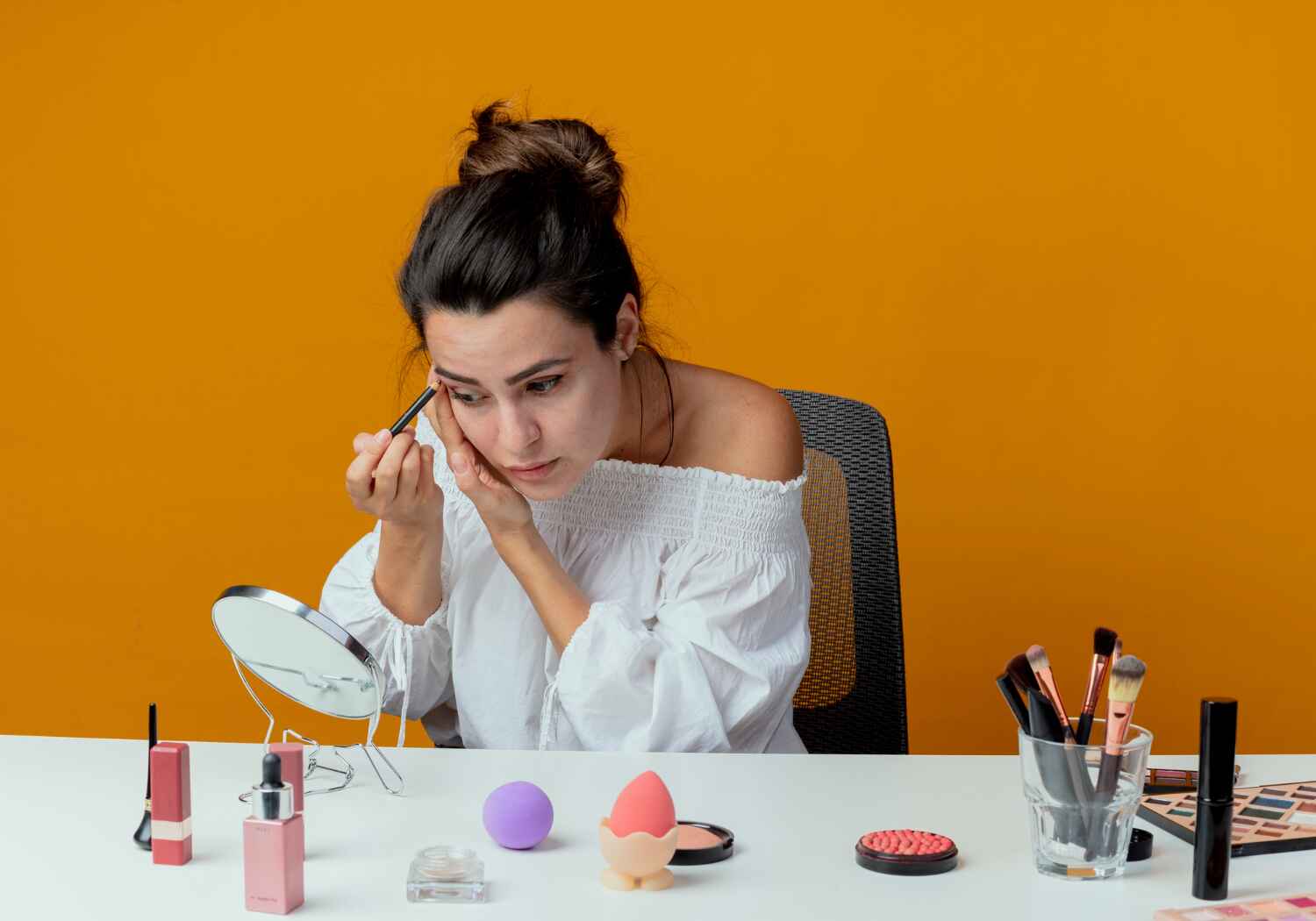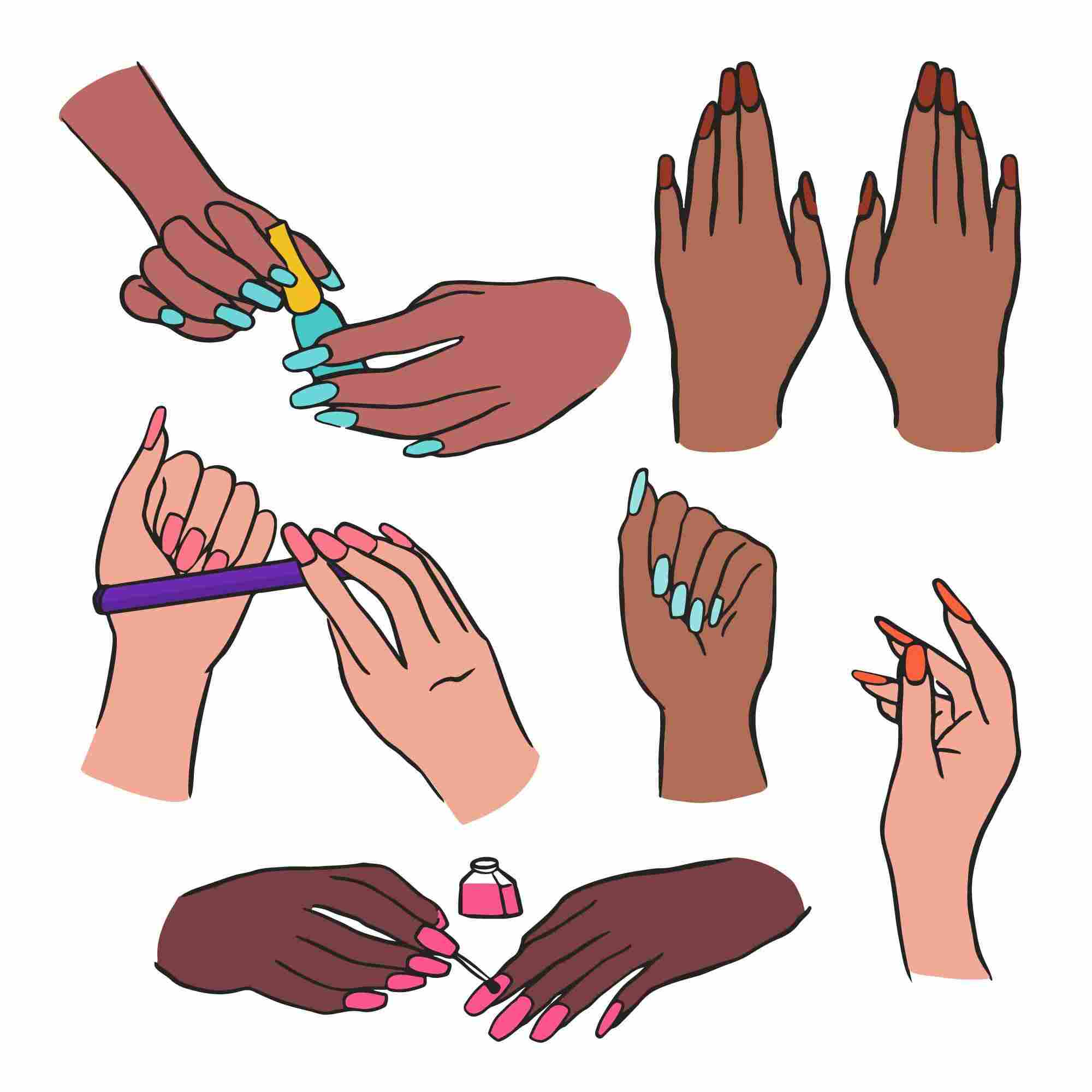Introduction
Nail care often gets overlooked in our daily beauty routines, but it’s essential for maintaining healthy, strong, and attractive nails. Good nail care not only enhances your appearance but also prevents common problems like infections, breakage, and discoloration.
Ready to pamper your nails with the tender love and care they merit? Embark with us into the intricate realm of nail nurturing!
Understanding Nail Structure
Before we get into the nitty-gritty of nail care, it’s crucial to understand what you’re working with. Your nails are made up of several parts:
- Nail Plate: The visible part of the nail.
- Nail Bed: The skin beneath the nail plate.
- Cuticle: The tissue that overlaps the plate and rim of the nail.
- Lunula: The whitish half-moon shape at the base of your nail.
- Matrix: The part hidden under the cuticle where new cells are produced.
Nails grow from the matrix, and as new cells form, older cells get pushed out, forming the hard surface we see.
Daily Nail Care Routine
Consistency is key to maintaining nail health. Here’s a simple daily routine:
- Cleanse and Moisturize: Use a gentle soap and a soft brush to clean under your nails. Follow up with a good moisturizer to keep your nails and cuticles hydrated.
- Protect from Damage: Eschew employing your keratinous appendages as implements to pry open containers or scour surfaces. This practice can induce fissures or fractures in them.
Proper Nail Trimming Techniques
Trimming your nails might seem straightforward, but doing it incorrectly can lead to problems. Here’s how to do it right:
- Choose the Right Tools: Invest in quality nail clippers and a fine-grit nail file.
- Trim Correctly: Cut your nails straight across and then round the tips in a gentle curve to prevent ingrown nails.
Cuticle Care
Cuticles protect your nails from infection, so it’s important to take good care of them:
- Keep Them Moisturized: Apply cuticle oil or cream regularly.
- Avoid Cutting Cuticles: Instead of cutting, gently push them back with a cuticle stick.
Moisturizing Your Nails and Cuticles
Maintaining the hydration of your nails and cuticles is paramount to averting their desiccation and fragility. Here are some tips:
- Best Moisturizers: Look for products with ingredients like shea butter, vitamin E, and jojoba oil.
- DIY Treatments: Olive oil and coconut oil are great natural moisturizers. Soak your nails in warm oil for 10-15 minutes for deep hydration.
Protecting Nails from Environmental Damage
Your nails can be easily damaged by harsh chemicals and environmental factors. To protect them:
- Avoid Harsh Chemicals: Wear gloves when cleaning or using chemicals.
- Keep Nails Dry: Prolonged exposure to water can weaken nails. Dry them thoroughly after washing.
Diet and Nail Health
Your diet plays a significant role in nail health. Essential nutrients include:
- Biotin: Found in eggs, nuts, and seeds, it strengthens nails.
- Iron: Spinach and red meat are good sources that prevent brittle nails.
- Omega-3 Fatty Acids: Found in fish, these keep your nails hydrated.
Avoiding Common Nail Care Mistakes
Even with the best intentions, we can make mistakes that harm our nails. Here are some to avoid:
- Over-Trimming: Cutting nails too short can lead to painful ingrown nails.
- Ignoring Problems: Discoloration, ridges, and other changes can indicate health issues. Don’t ignore them.
Professional Nail Treatments
Sometimes, a professional touch is needed. Benefits include:
- Expert Care: Professionals can shape and treat nails better.
- Relaxation: A salon visit can be a relaxing experience.
DIY Nail Care at Home
For those who prefer DIY, here are some tips for a salon-like experience at home:
- Home Manicure Tips: Start with clean, filed nails. Soak them, push back cuticles, moisturize, and then apply polish.
- Essential Tools: Invest in a good nail file, buffer, cuticle pusher, and quality nail clippers.
Recognizing and Treating Nail Problems
It’s important to recognize when something is wrong. Common issues include:
- Fungal Infections: Look for discoloration, thickening, and separation from the nail bed. See a dermatologist if you notice these signs.
- Brittle Nails: Often caused by dryness or a lack of nutrients. Moisturize and consider dietary supplements.
Nail Care for Men
Nail care isn’t just for women. Men can benefit too:
- Simple Tips: Keep nails trimmed and clean. Moisturize regularly and avoid using nails as tools.
- Why It Matters: Well-groomed nails are a sign of good hygiene and can boost confidence.
Nail Care Myths Debunked
There are many misconceptions about nail care. Here are some facts:
- Myth: Cutting cuticles is necessary for nail health. Fact: Cutting cuticles can lead to infection. Pushing them back is safer.
- Myth: Nails need to “breathe.” Fact: Nails get their nutrients from blood, not air.
Conclusion
Healthy nails are a reflection of overall wellness. By following these tips, you can keep your nails strong, beautiful, and problem-free. Remember, consistent care and attention to detail make all the difference.
Read more : How to Take Care of a Broken Nail
FAQs
How often should I trim my nails?
Trim your nails every one to two weeks, depending on how fast they grow.
Can diet really affect my nails?
Absolutely! Ensuring robust nail health necessitates a well-rounded dietary regimen replete with essential vitamins and minerals.
What are the signs of unhealthy nails?
Look for discoloration, ridges, thickening, or separation from the nail bed. These can indicate underlying health issues.
How can I prevent my nails from breaking?
Keep them moisturized, avoid harsh chemicals, and don’t use them as tools.
Is it safe to cut my cuticles?
It’s better to push them back gently rather than cut them to avoid infection.



